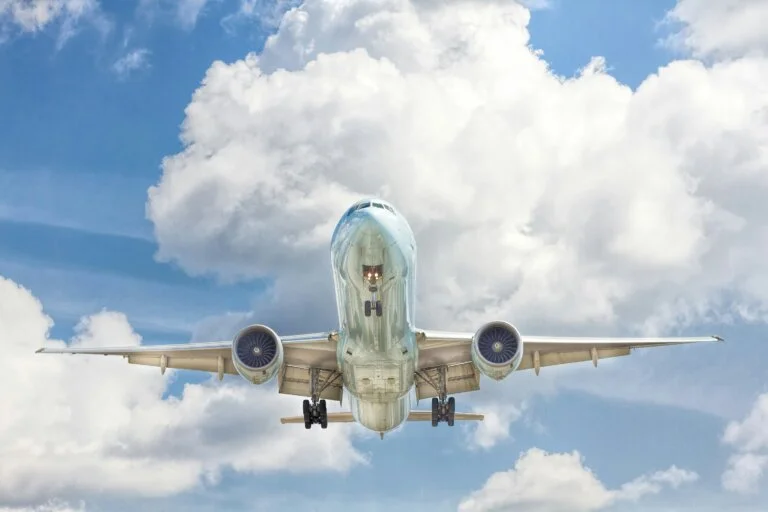The Boeing Company and Alaska Airlines filed answers in federal court on March 11, 2024, which formally admit the NTSB found door plug bolts essential to safe flight were missing. Alaska Airlines admits that passengers at the time of the incident “reported experiencing varying levels of physical and emotional distress” from the depressurization event. Both defendants nevertheless deny liability to passengers represented by Stritmatter Kessler Koehler Moore, who filed a class action complaint after the door plug blew out from Alaska Airlines Flight 1282.
Boeing admits that “according to the NTSB Preliminary Report, post-accident examination showed that the upper guide fittings were fractured vertically through the inboard wall of the track. Boeing further admits that, according to the NTSB Preliminary Report, photo documentation obtained from Boeing shows evidence that the left MED plug closed with no retention hardware (bolts) in the three visible locations.” Boeing admits that inspections conducted by operators after the incident reportedly found loose bolts.
Boeing also admits to knowing that in 2023, its supplier Spirit AeroSystems notified Boeing of three other manufacturing process defects in 737 MAX aircraft.
Alaska Airlines admits that before the January 5, 2024 door plug incident the airline was aware of of Boeing’s indictment and deferred prosecution arising from the 737-MAX 8 crashes in Ethiopia and Indonesia, as well as Boeing’s production problems. However, the airline claims it had no duty to oversee production of the airliners it purchased. Nevertheless, since the Flight 1282 incident, Alaska Airlines has put its inspectors into Boeing’s manufacturing facility.
Alaska Airlines also admits that it detected three auto-pressure system warnings in Flight 1282’s particular 737-MAX 9 prior to the January 5, 2024 incident. Boeing makes a similar admission. The airline contends, “none of these events involved an issue with the pressurization” of the aircraft. Nevertheless, the airline admits it “restricted [the aircraft] from extended range operations so the aircraft could remain closer to one of Alaska Airlines’ maintenance repair stations in the continental United States “in case a control system issue were to reoccur.”
The airline denies any correlation between the pressurization controller and the door plug accident on Flight 1282. Even so, whether those lights illuminated as an indicator of a pressure leak, and whether passengers prior to the January 5, 2024 flight reported noises that could indicate such a leak in the left side row in which the door plug was located, are issues that have not been conclusively determined. The NTSB has disclosed that physical evidence shows the door plug was moving and may have exposed a gap between the plug and the airframe during the 154 flights Alaska Airlines made before the plug detached and flew off that airframe.
A story published in the New York Times on March 12, 2024 asserts that Alaska Airlines’ own engineers were concerned about the lights and thus scheduled the aircraft to be inspected for maintenance to be performed on the same day that the in-flight door plug blew out of the airliner with passengers aboard.
Boeing’s denial stands in stark contrast to its CEO Dave Calhoun’s widely reported public statements that the door plug detachment was “our mistake”. Alaska Airlines asserts, “Plaintiffs’ alleged injuries or damages were caused by the fault of persons or entities over whom Alaska Airlines has no control and for whom Alaska Airlines carries no responsibility, including but not limited to Defendant The Boeing Company and/or non-party Spirit AeroSystems.”
Boeing and Alaska Airlines continue to refuse to answer some allegations, citing a federal regulation shielding aircraft manufacturers and airlines from inquiries on matters under investigation if the NTSB has not made the information public. However, a federal court in another 2021 lawsuit against Boeing and Southwest Airlines alleging defects in the 737 MAX 8 aircraft ruled that reliance on that regulation to avoid admissions in litigation is unconstitutional.[1] The NTSB has held numerous press conferences in which it has discussed in detail its preliminary findings that the door plug was missing four bolts that should have secured the door plug.
Passenger attorney Daniel Laurence commented,
“It is appalling that even now, Boeing and Alaska Airlines admit their airliner, which was entirely within their control, and which they knew or should have known to be defective, blew open in midair, mere minutes from killing everyone aboard; and yet, these corporations even now refuse to admit that they should be held accountable for the deep and lasting terror they inflicted, forcing real people to look in the face of a sudden death they had no power to avoid.”
[1] Earl v. The Boeing Co., 515 F.Supp.3d 590 (E.D. Tex. 2021).
Stritmatter Kessler Koehler Moore (The Stritmatter Firm) is based in Seattle, WA, and is a nationally recognized firm known for representing victims of wrongful death, serious personal injuries, and civil rights violations. The legal team for this case includes Daniel Laurence, Melanie Nguyen, Deborah Silberman, Andrew Ackley, and Brad Moore.

